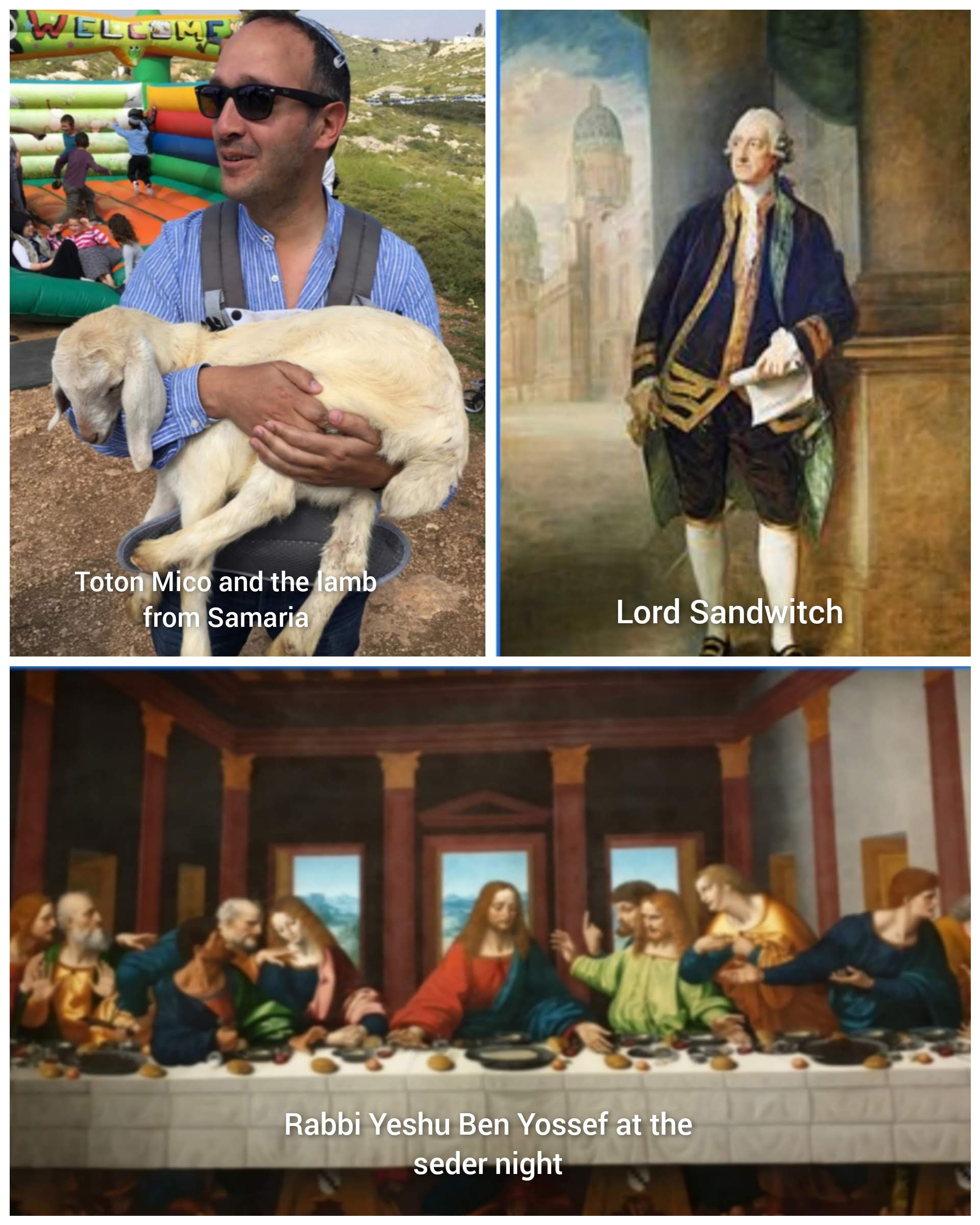Better Together: Hillel's Sandwich

Better Together: Hillel's Sandwich
by Laura Tomes and adapted by Michael Am Shalem
As legend has it, the idea of eating two pieces of bread with something in between was invented by England’s fourth Earl of Sandwich (1718-1792). An avid gambler, the Earl couldn’t bear to leave the card table for as long as it took to eat a normal meal, and so invented this handy snack so that he could eat and gamble at the same time. Talk about multitasking!
Yet as nice as this story is, I think that anyone who has ever attended a Seder might argue that the earl wasn’t so innovative.
Long before the card tables of 18th century England, Hillel the Elder, the 1st century rabbi for whom our movement is named, argued that elements of the Passover Seder, including maror (bitter herbs) and charoset (sweet apples and nuts) should be placed in between two slices of matzah and eaten in a sandwich. When the temple stood, some Talmudic rabbis suggest, Hillel even included the korban pesach, the sacrificed Passover lamb, in his sandwich too. With the Temple destroyed, the lamb stopped being included as part of the meal. A shame - lamb, horseradish and apple chutney does sound pretty tasty.
As with all innovations, Hillel’s sandwich raised some suspicion. The Talmud, in Tractate Pesachim, records a debate. Whereas Hillel promoted eating of these elements in one go, other rabbis argued that each of these elements are separate and should be eaten separately. They all have their own blessing as part of the Seder, and they all carry very different, even contradictory symbolisms. Matzah represents our hurried escape from Egypt and the dryness of the desert. The bitter herbs of maror remind us of the bitterness of slavery in Egypt. And charoset, with its chunky, mortar-like texture, tells both of the experience of slave labor, but also the sweetness of redemption. Don’t get these things confused, Hillel’s opponents said. Eat them separately. After all, as part of the Seder we don’t say a specific blessing for the sandwich, because we already made the blessings on each of its component parts. It’s just not necessary to add the extra step of also eating them together.
But Hillel, of course, won the day, and we’ve been eating tasty horseradish charoset matzah combinations ever since. And there’s a nice symbolism here, I think. Hillel’s opponents are correct. These elements are contradictory. They do each have their own blessings. But there’s something amazing that emerges when you get just the right combination of horseradish, sweet apples and crunchy matzah. The flavors not only complement each other, but enhance each other in ways that they could never achieve alone. Complementary flavors and textures – it’s what gourmet cuisine is all about.
Hillel was right. Different does not mean that things should be kept separate. We stand proud of our differences, just as each item of the korech, the Hillel sandwich, each receives its own, distinct blessing. But each of these items can also come to life in a new way when we bring them together.
We have seen many divisions emerging in the Jewish world. My blessing for us all this Pesach is to embrace the possibility of true korech – real complement from difference. The rabbis of the Talmud correctly observe that we don’t say a specific blessing on the Hillel sandwich. Maybe this year is the right year to start including one. May each of our Hillel sandwiches this year carry the blessing of reminding us of the power that can come from makhlochet bein achim b’ahava – debate between brothers out of love – love of the Jewish people, love of our tradition, and loving hope for peace and justice for all people everywhere.
Zionist twist: May we have the opportunity to eat again the Hillel's Sandwich with the lamb, or may we start from now as we can consider the Zionist Entreprise as our redemption.
Inspired to create
your own Haggadah?
Make your own Haggadah and share with other Seder lovers around the world
Have an idea
for a clip?
People like you bring their creativity to Haggadot.com when they share their ideas in a clip
Support Us
with your donation
Help us build moments of meaning and connection through
home-based Jewish rituals.
OUR TOP CONTRIBUTORS
Passover Guide
Hosting your first Passover Seder? Not sure what food to serve? Curious to
know more about the holiday? Explore our Passover 101 Guide for answers
to all of your questions.






















